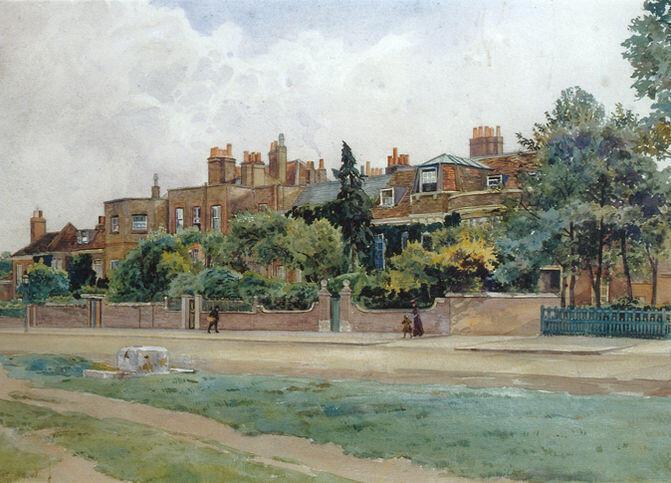Louisa Charlotte Hamilton married John Tyndall, then Superintendent of the House and Director of the Laboratory at the Royal Institution, in Westminster Abbey on 29 February 1876, when he was in the 50s, and she just over 30. It is perhaps ironic, after Tyndall's Belfast Address 18 months earlier, that this event took place in the Abbey - indeed Tyndall's friend Herbert Spencer refused on principle to attend the event in a religious venue. Dean Stanley, the Broad Anglican, officiated; despite his wife being desperately ill (she died the following day). For the next 10 years Louisa was effectively châtelaine of the Royal Institution, hosting dinners and gatherings around Discourses and other lectures.
Tyndall, from a humble background in rural Ireland, was by this stage a habitué of aristocratic soirées through connections made at the Royal Institution, and he cemented his place by marrying the eldest daughter of Lord Claud Hamilton, whose brother the Duke of Abercorn was no less than the Lord Lieutenant of Ireland at the time. With Belfast in his mind, Tyndall noted that 'he has attacked my "materialism", and will no doubt be surprised to find his niece carried off by the "materialist"'.
Tyndall had met Louisa through the social connections of the Royal Institution, which her mother joined in 1874. He socialised with them at their country house Heathfield Park in Sussex and travelled with them in the Alps. Tyndall had a roving eye for the ladies and a history of romantic attachments and rejections of marriage proposals, however it was a very happy marriage, and quite apart from the fact that they were besotted with each other Louisa worked closely with John on his research and writings. As he said with respect to her cooking, 'Louisa is fond of experimenting. Had she been a natural philosopher, her perpetual sorting might have revealed some new truth. In her cooking some of her experiments fail, but others are remarkably successful'.
She was frequently in the laboratory with him, taking notes, and helping write an account of 'our recent observations for the Philosophical Magazine'. Despite the use of 'our', Louisa's name did not appear on any paper; Tyndall seems to have held the fairly common view for the time that women were not capable of real scientific creativity but could be expected to understand anything revealed by the savants. She herself would have wanted more scope, commenting to John with respect to her earlier life on 'my want of higher work and the impossibility of getting it'.

Meeting Humphry Davy
Oh her return to London at the end of 1810, Apreece began attending Humphry Davy's lectures at the Royal Institution and was clearly immediately captivated, telling Scott at the start of March 1811 that 'Davy is remarkably pleasant, and all the fashion and celebrity of admiration do not injure his unaffectedness'. Davy reciprocated quickly and while visiting Bakewell in Derbyshire over Easter 1811, he addressed a long nature poem for her 'eye only'.
It is hard to trace in detail the development of their relationship mainly because no letters from her to him have survived and most of the numerous notes from him to her, now in the archives of the Ri, written during 1811 and 1812 are undated and undatable with any precision. But they began to be seen in Society together, for example dining with Caroline, Princess of Wales. Her lady-in-waiting, who did not have a high opinion of Davy, wrote in her diary that 'Mrs A[preece] seems tinctured with something like love'.